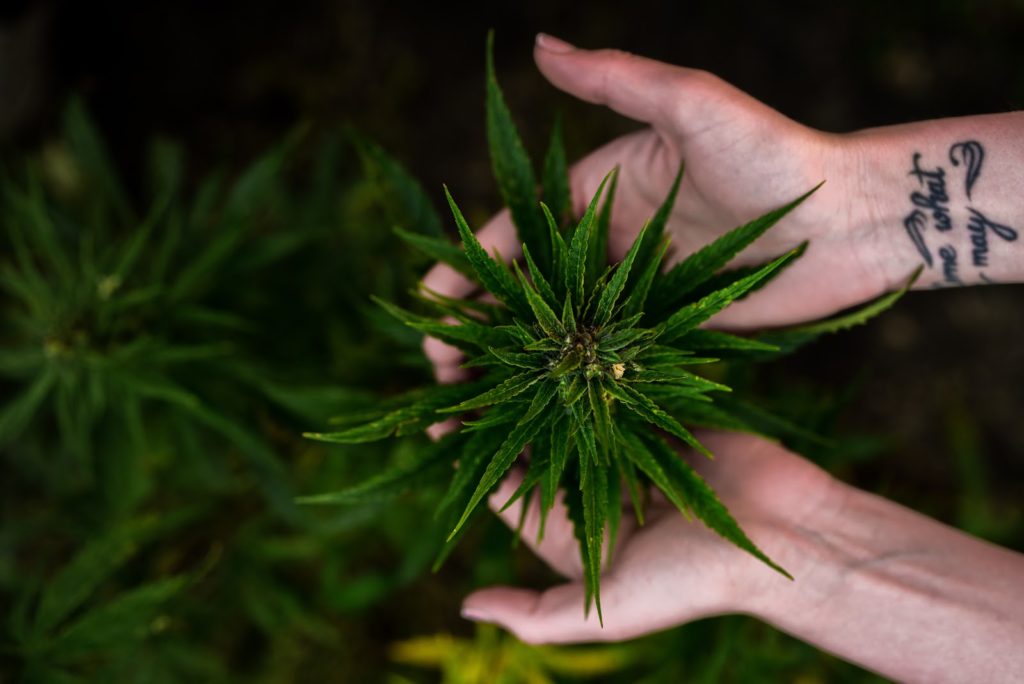Cannabis
The Endocannabinoid System: What, Where and Why Do I Care?
Your body is filled with weed receptors.
No, we’re not pranking you. This statement is true.
Whether or not you’ve consumed cannabis recently, cannabinoids are coursing through every nook and cranny in your body and brain right now.
Humans internally produce cannabinoids through a system called the endocannabinoid system (ECS). It’s a system that works with cannabis to get you high, but it’s also critical for ensuring your survival.
Incredibly, not many people have even heard about the ECS. But if you’re an enjoyer of cannabis, then it’s high time to keep you up to speed on this biological system.
 The human body has its own system, the ECS, for processing and even creating its own cannabinoids. It’s capable of interacting with active chemical compounds, like THC.
This system exists in all mammals, birds and other invertebrates. It’s best described as a complex symphony of neurotransmitters and receptors that are present at nearly every cell in the body and central nervous system.
The 3 key components of the ECS are:
The human body has its own system, the ECS, for processing and even creating its own cannabinoids. It’s capable of interacting with active chemical compounds, like THC.
This system exists in all mammals, birds and other invertebrates. It’s best described as a complex symphony of neurotransmitters and receptors that are present at nearly every cell in the body and central nervous system.
The 3 key components of the ECS are:
Appetite and the ECS
If you’ve ever been high, then it’s probably no surprise to you that endocannabinoids stimulate appetite (aka the munchies!).
In normal conditions, the release of endocannabinoids in the gut and in the brain’s appetite centers can turn on hunger. They also stimulate digestion, meaning that their role in eating is crucial at all stages.
Cannabis has been used as a treatment for conditions where appetite is lost, like certain forms of cancer treatment.
 Exercise is known to induce the release of endocannabinoids. It is thought that the anti-anxiety and pleasurable effects of exercise (for example, the “runners high”) are the result of this release.
So, regular exercise is a healthy way to boost endocannabinoid signalling. This is a sure-fire to also improve your mood.
Exercise is known to induce the release of endocannabinoids. It is thought that the anti-anxiety and pleasurable effects of exercise (for example, the “runners high”) are the result of this release.
So, regular exercise is a healthy way to boost endocannabinoid signalling. This is a sure-fire to also improve your mood.
What is the Endocannabinoid System?
 The human body has its own system, the ECS, for processing and even creating its own cannabinoids. It’s capable of interacting with active chemical compounds, like THC.
This system exists in all mammals, birds and other invertebrates. It’s best described as a complex symphony of neurotransmitters and receptors that are present at nearly every cell in the body and central nervous system.
The 3 key components of the ECS are:
The human body has its own system, the ECS, for processing and even creating its own cannabinoids. It’s capable of interacting with active chemical compounds, like THC.
This system exists in all mammals, birds and other invertebrates. It’s best described as a complex symphony of neurotransmitters and receptors that are present at nearly every cell in the body and central nervous system.
The 3 key components of the ECS are:
- Cannabinoid receptors located on the surface of cells
- Endocannabinoids, molecules that activate cannabinoid receptors
- Enzymes that break down endocannabinoids after they’ve served their function
What does Cannabis do to the ECS?
When you consume cannabis, THC floods the ECS system, attaching to cannabinoid receptors throughout the brain and body. Since the receptors are all around the body, the ECS is thrown off balance. That’s why you get such varied effects. You get the euphoric high, slowed reaction times and even slight anxiety. Aside from being the target of drugs like cannabis, the ECS plays a role in nearly every physiological and psychological function in our brain and body. Just think of it as the master regulator of growth and development, pain and pleasure and everything in between.Appetite and the ECS
If you’ve ever been high, then it’s probably no surprise to you that endocannabinoids stimulate appetite (aka the munchies!).
In normal conditions, the release of endocannabinoids in the gut and in the brain’s appetite centers can turn on hunger. They also stimulate digestion, meaning that their role in eating is crucial at all stages.
Cannabis has been used as a treatment for conditions where appetite is lost, like certain forms of cancer treatment.
Mood and Memory
Endocannabinoids regulate many of the so-called “executive functions” of the brain, which include critical thinking, planning and memory. They do this by regulating the levels of other important neurotransmitters such as serotonin and dopamine. They are also crucial in the functions of “synaptic plasticity,” which is the brain’s ability to adapt to new information. Dysfunctions in the endocannabinoid system have been linked to many psychological conditions from depression and anxiety to memory disorders.Pain
Endocannabinoids are analgesic (anti-pain) and anti-inflammatory molecules. They work both in the brain’s pain-perception regions and also at the nerve cells in the body, Their release dampens the signals at the nerves that are sending messages of pain and also quiet the brain’s reception of these signals. Much of this is achieved through the CB2 receptor, which is more prevalent in the body than the CB1 receptor (which is, in turn, more prevalent in the brain).Other important functions
In addition to these roles listed above, endocannabinoids regulate body temperature, stress responses, sleep and exercise. They serve a very important function in the immune system. They also play an important part in such basic functions as the birth and death of brain cells, the movement of the intestines and blood pressure regulation. In fact, the CB1 receptor is one of the most common elements in the entire human body and seems to participate in nearly every function of life.How to Take Care of Your Endocannabinoid System
Knowing that the endocannabinoid system is such a crucial component of life, it is important to understand how our everyday actions might impact its function. The endocannabinoid system can be altered by our exercise and sleep habits, our eating and drinking, and of course, by cannabis itself.Diet
As mentioned above, endocannabinoids are made from fatty molecules. Some of these, known as “essential” fatty acids, can only be derived from our diets. The omega fatty acids, Omega 3/6/9, are particularly important for a healthy, functional endocannabinoid system. In particular, DHA, which is found in fatty fish (such as salmon and tuna), seaweed, plus flax, chia and hemp seeds, is a crucial element of the endocannabinoid system. EPA, also found in fatty fish and algae, is another important dietary source of fat which eventually becomes endocannabinoids. Diets that are lacking in fat, or have an imbalance in fat sources (particularly high levels of omega-6, which come from grain-oils like soybean and sunflower oil), can cause endocannabinoid dysfunction.Exercise
 Exercise is known to induce the release of endocannabinoids. It is thought that the anti-anxiety and pleasurable effects of exercise (for example, the “runners high”) are the result of this release.
So, regular exercise is a healthy way to boost endocannabinoid signalling. This is a sure-fire to also improve your mood.
Exercise is known to induce the release of endocannabinoids. It is thought that the anti-anxiety and pleasurable effects of exercise (for example, the “runners high”) are the result of this release.
So, regular exercise is a healthy way to boost endocannabinoid signalling. This is a sure-fire to also improve your mood.

